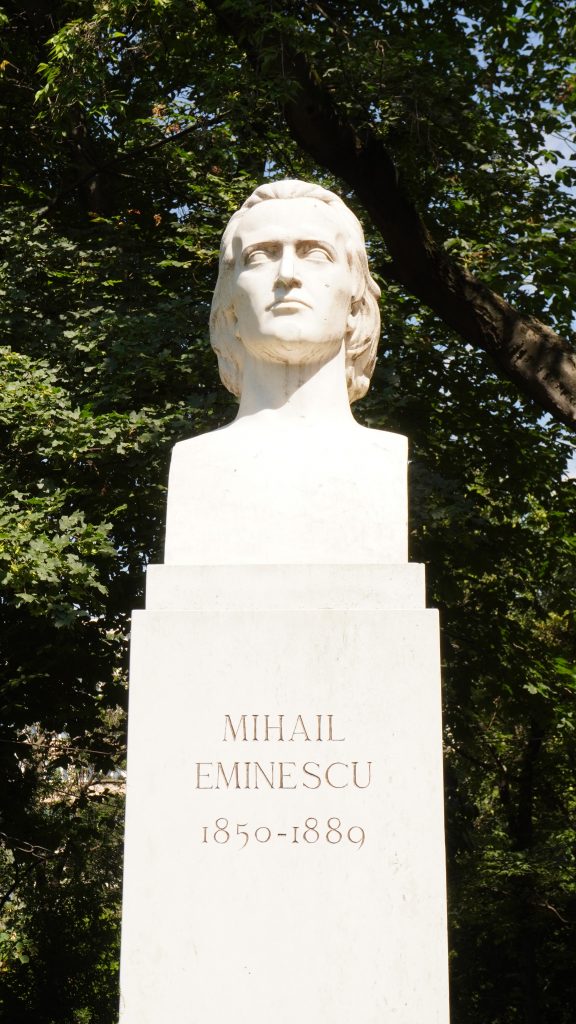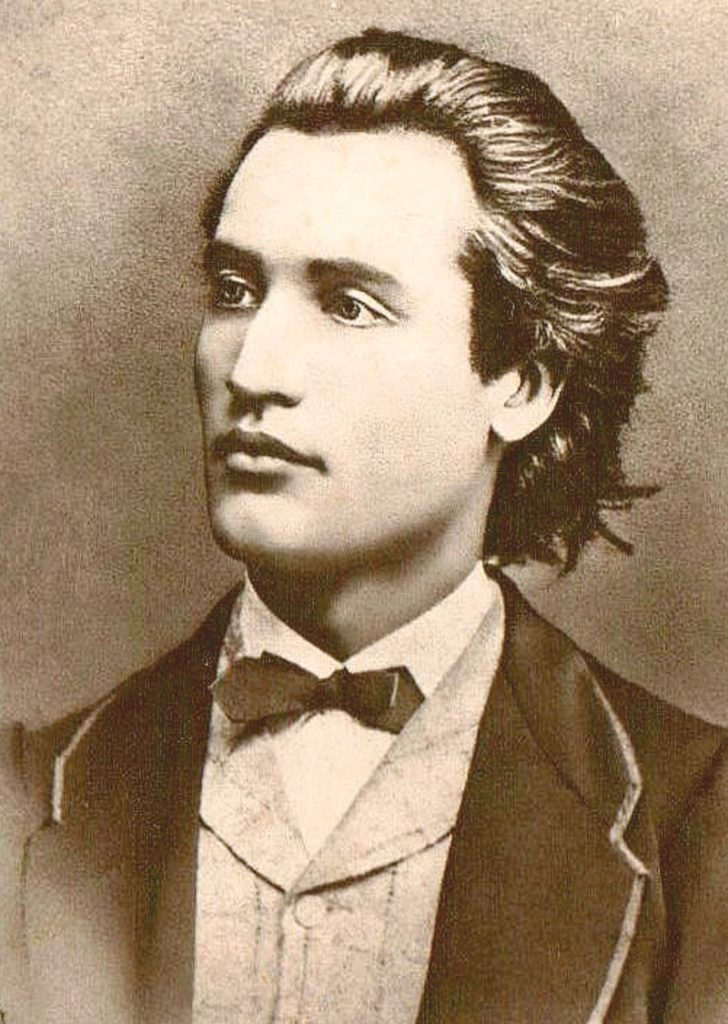The bust of Mihai Eminescu is made in marble by the sculptor Ion Jalea (1887-1983). Placed in 1943, it is one of the twelve busts in the Writers’ Round in Cișmigiu Garden.
The sculptor is the author of several works, including the one representing George Enescu in the Opera Square, P.I. Ceaikovki in the Herăstrău Park, Spiru Haret in the University Square, the two characters in front of the Giuleşti Theater or the Railway Heroes Monument in the North Station Square.

Who was Mihai Eminescu?

Mihai Eminescu is one of the Great Classics of Romanian literature. Romanian poet, prose writer and journalist, considered by Romanian readers and literary critics as the most important romantic writer in Romanian literature, Eminescu is also nicknamed “The Daystar of Romanian poetry”.
His poetic work covers a wide range of themes, from love and nature, to philosophy, metaphysics and social criticism. Notable works include Luceafărul (The Vesper/The Evening Star/The Lucifer/The Daystar), Odă în metru antic (Ode in Ancient Meter), and the five Letters (Epistles/Satires). In his poems, he frequently used metaphysical, mythological and historical subjects.
Eminescu’s style is characterized by a rich poetic language, strong symbolism and philosophical depth. He was able to create vivid images and metaphors, and his lyrics are recognized for their sonority and melodious rhythm.
- The National Culture Day is marked on January 15, the date being chosen as a tribute to the national poet of the Romanians, Mihai Eminescu, born on January 15, 1850.
- In recognition of the universality of Eminescu’s work, 100 years after the death of the national poet, 1989 was declared by UNESCO, “International Eminescu Year”, and UNESCO also decided that Mihai Eminescu would be the poet of the year 2000.
- NASA named a crater on the planet Mercury after Eminescu.
- In the catalog of small planets, among the 233,943 planets in the Universe that bear a name, Planet Eminescu is at position 9,495.
For more information, click here